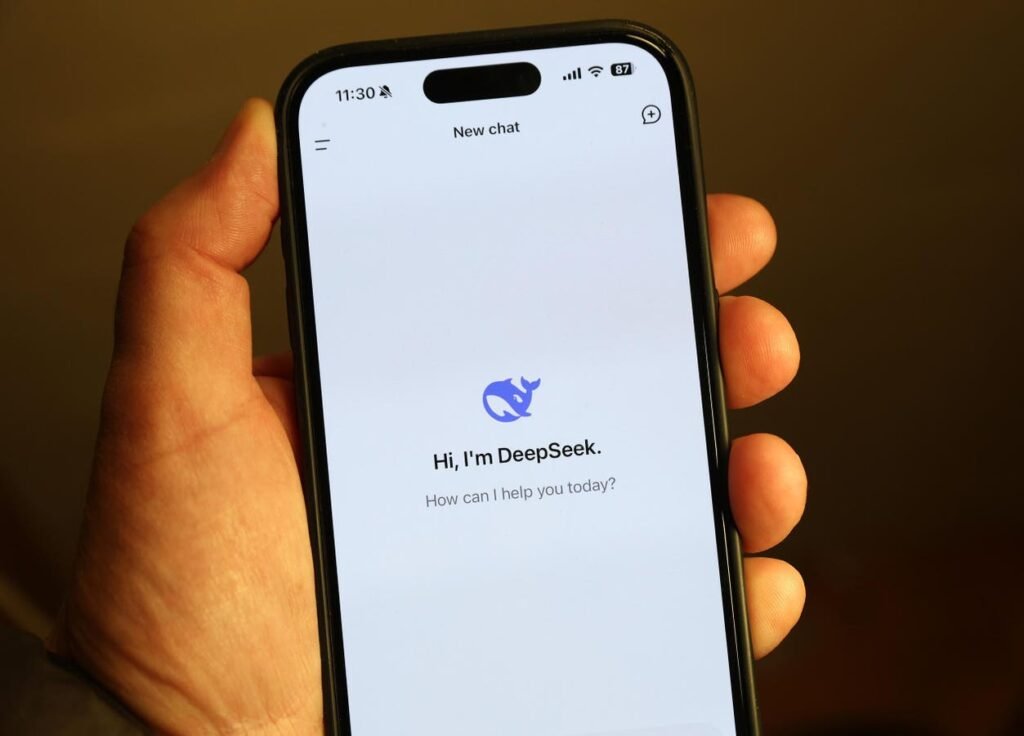The DeepSeek app is displayed on an iPhone screen on January 27, 2025 in San Anselmo, California.
The US tech industry was shaken by the recent announcement from DeepSeek, a Chinese startup whose AI model rivaled OpenAI’s capabilities. DeepSeek quickly gained attention, sparking hope for more affordable AI deployment with open-source code. However, excitement turned to worry when Wiz analysts discovered security vulnerabilities and potential data exposure, raising concerns about the risks of adopting this new technology. This revelation serves as a warning for healthcare CIOs. As the adoption of AI accelerates, leaders must thoroughly assess security, data privacy, and long-term viability before integrating new AI solutions into healthcare.
Critical Security Flaws In DeepSeek’s System
Wiz Research uncovered a publicly accessible ClickHouse database from DeepSeek that allowed complete control over database operations, potentially exposing sensitive internal data. The breach included a vast amount of log streams containing chat history, secret keys, backend information, and other confidential details. Healthcare CIOs should pay close attention to these areas when implementing AI solutions.
Education and Monitoring
Healthcare CIOs need to take a proactive approach to overseeing AI by focusing on education and continuous auditing of corporate assets. By overemphasizing AI risks, all stakeholders, from IT teams to frontline clinicians, can understand the importance of maintaining secure and compliant AI solutions. CIOs should implement robust monitoring systems to track AI deployments, ensuring visibility into installed applications and data movement across the organization. Unsupported software and hardware can create vulnerabilities, increasing the risk of cyberattacks, data breaches, and system failures. By educating teams on these risks, CIOs can cultivate a security-focused culture where employees identify and mitigate potential threats before they escalate.
Aside from education, CIOs must enforce strict HR policies to ensure organizational accountability. Collaboration with HR is essential to establish clear guidelines on AI usage, including disciplinary measures for non-compliance. Regular audits should identify unauthorized access to AI applications. By combining continuous education with stringent enforcement, CIOs can safeguard healthcare systems from AI-related risks, maintain compliance with industry regulations, and uphold patient trust.
CIO Contract Signoff
Healthcare organizations often procure technology without the CIO’s oversight, leading to shadow IT. Departments may independently acquire solutions, bypassing necessary reviews. To prevent this, organizations should establish a process that grants the CIO full visibility into all technology purchases. Requiring CIO signoff before final contract execution ensures alignment with security, compliance, and strategic objectives.
Collaborating with the legal team strengthens oversight by identifying purchases outside the CIO’s purview. Some organizations allow departments to purchase technology independently, making legal collaboration crucial for enforcing approval protocols. By involving the CIO in the procurement process, organizations can mitigate risks, enhance compliance, and ensure technology investments align with overall IT strategy.
Emergency Response Preparation
Healthcare CIOs often prioritize AI system deployment over breach response planning. However, breaches are inevitable in today’s landscape. Practicing response strategies ensures that CIOs and their teams can act swiftly in the event of an incident. A well-prepared plan minimizes downtime, safeguards patient data, and maintains trust. Neglecting breach preparedness leaves organizations vulnerable to chaos and regulatory penalties.
Rapid response is crucial, especially in breaches involving unsupported technology. The proposed HIPAA rule mandates organizations to restore systems within 72 hours. Errol Weiss, Chief Security Officer at Health-ISAC, highlights three key areas:
- Speed is vital: Swift response to a cyber incident minimizes damage inflicted by attackers.
- Follow the incident response plan: Adhering to a pre-defined incident response plan is essential.
- Seek expert assistance: Engaging external cybersecurity professionals is advised if in-house expertise is lacking.
Healthcare CIOs face a pivotal decision between caution and embracing AI innovation. While avoiding AI until all risks are resolved may seem prudent, it hinders progress and weakens competitive advantage. CIOs must assess potential risks proactively, develop response strategies, and integrate AI solutions that align with organizational objectives. By balancing innovation with preparedness, they can drive transformation while safeguarding their organizations from unforeseen challenges.


